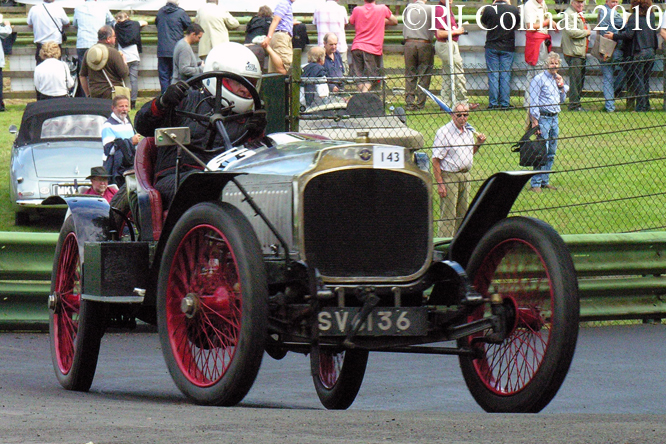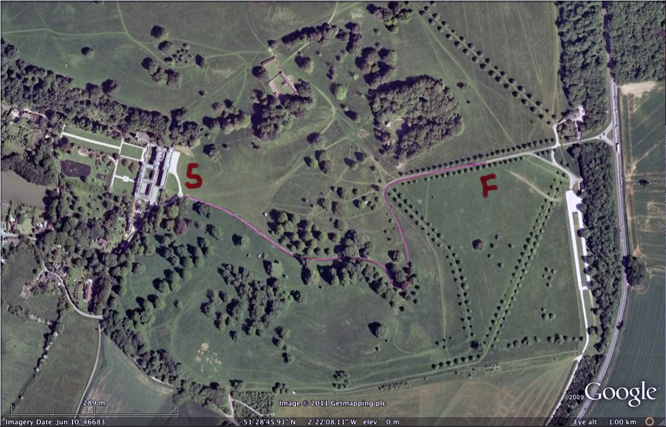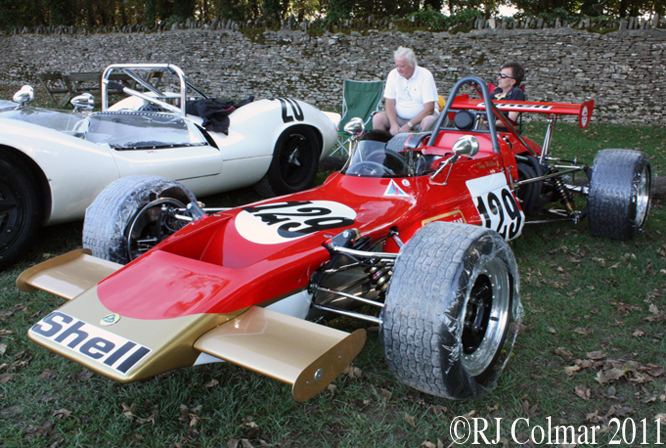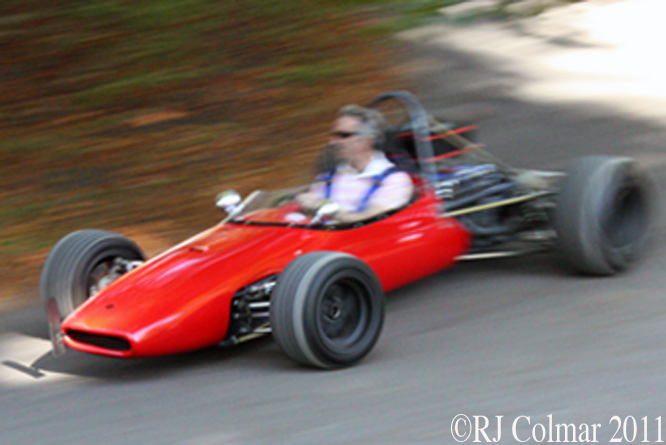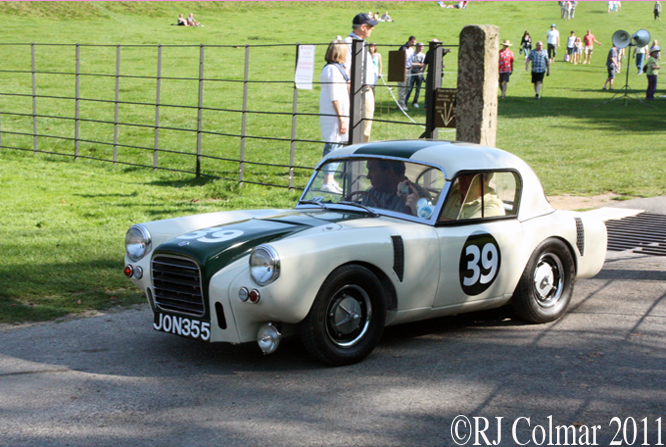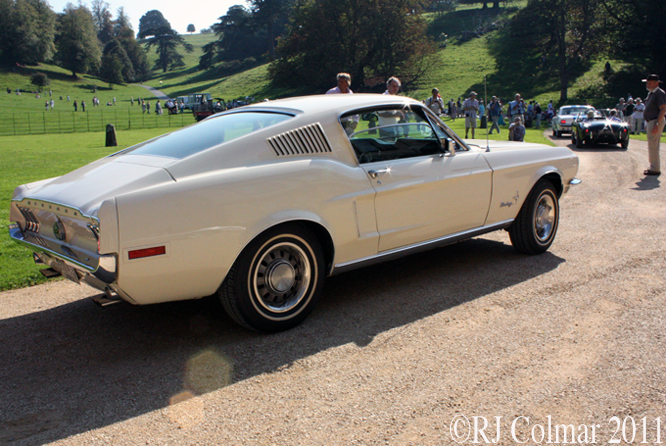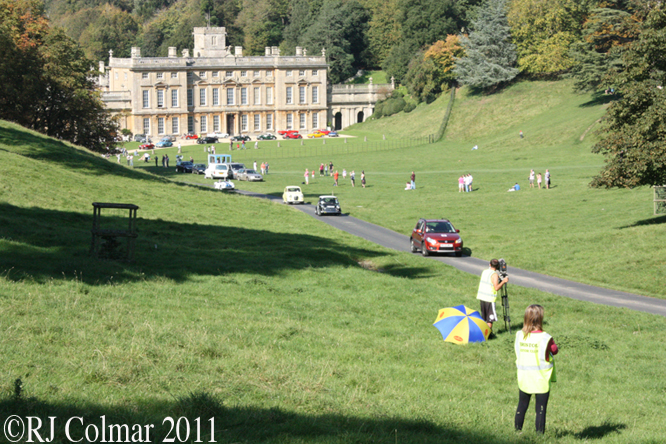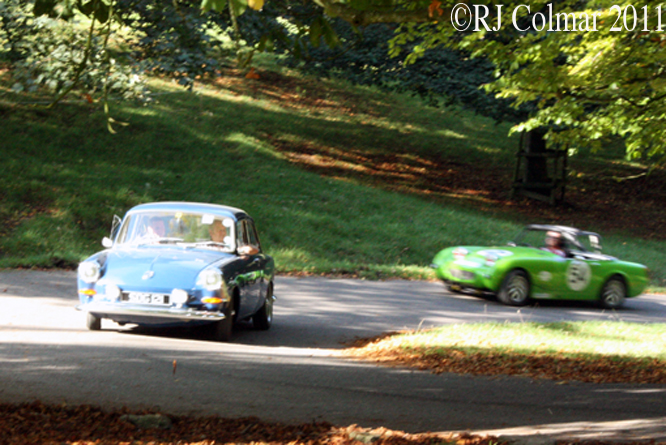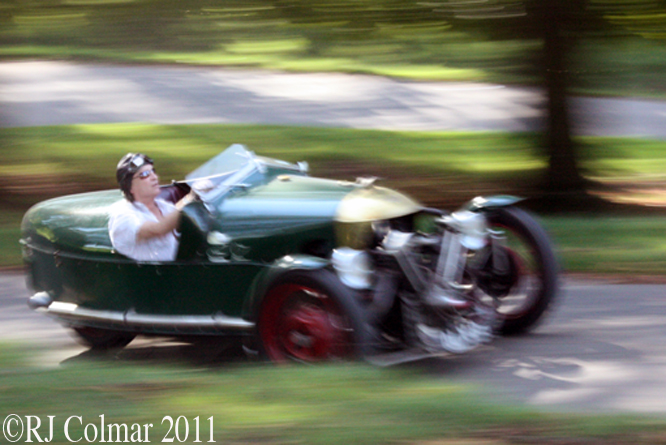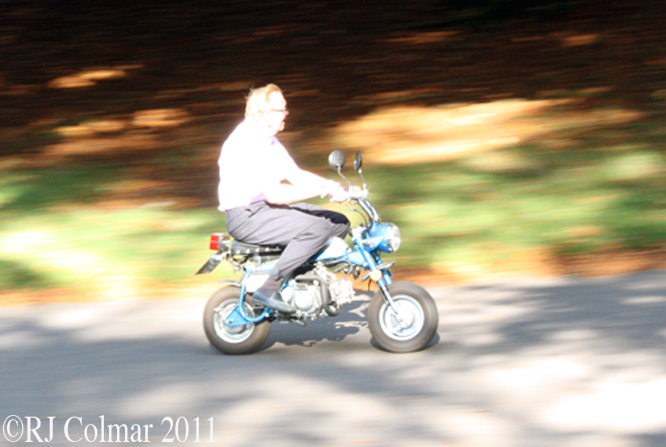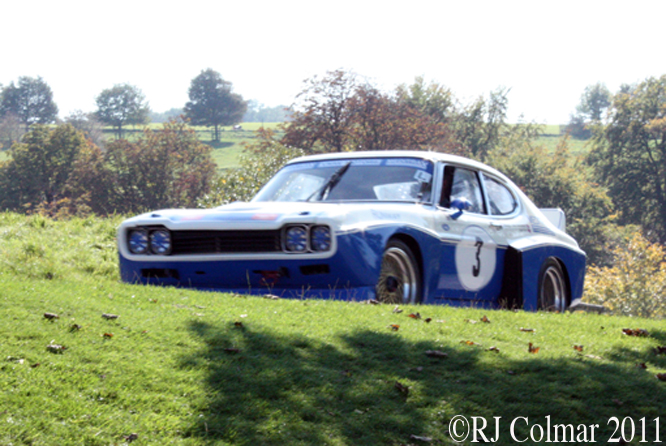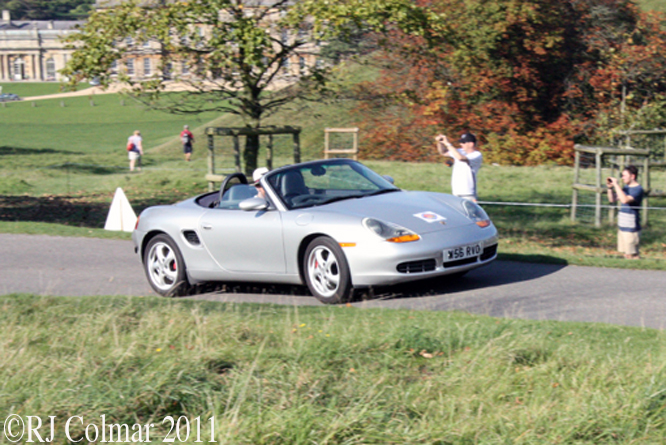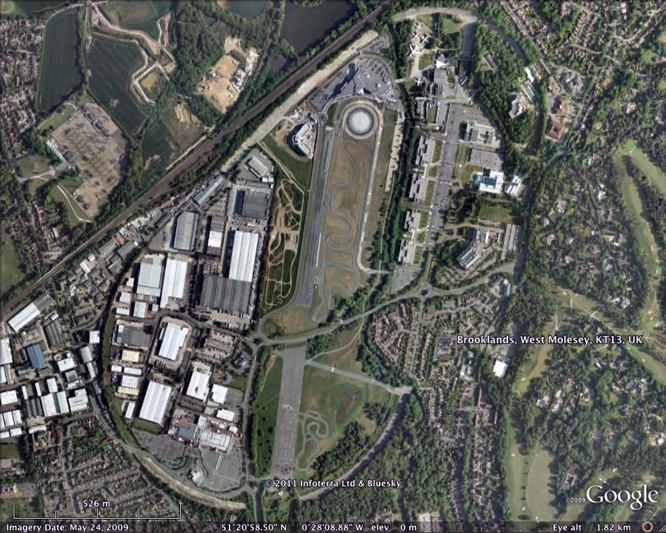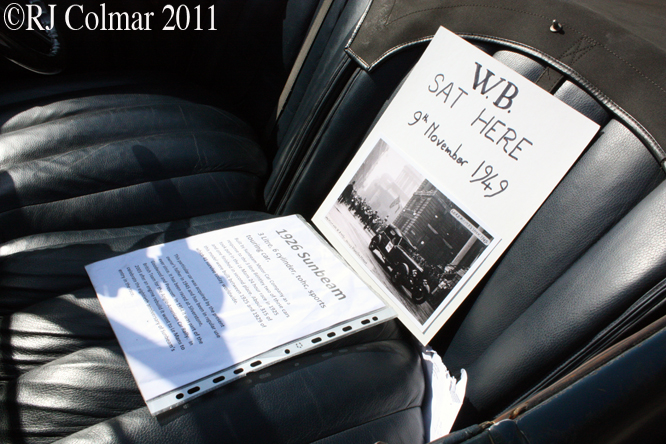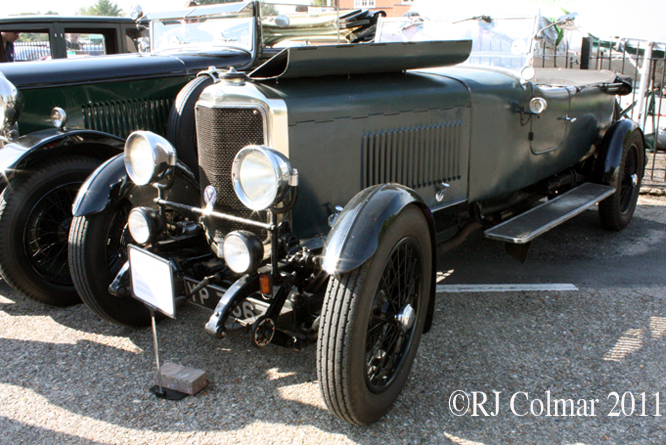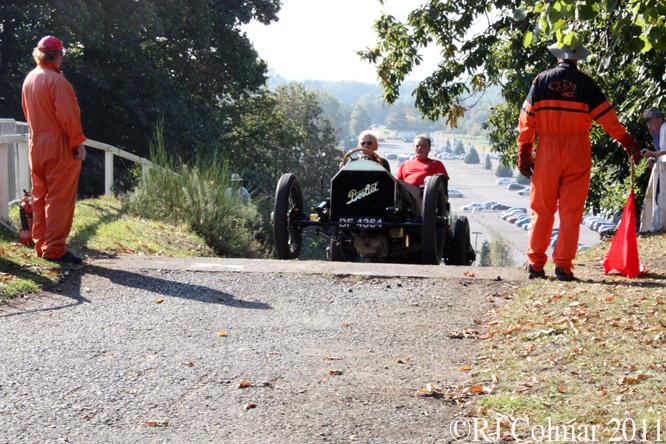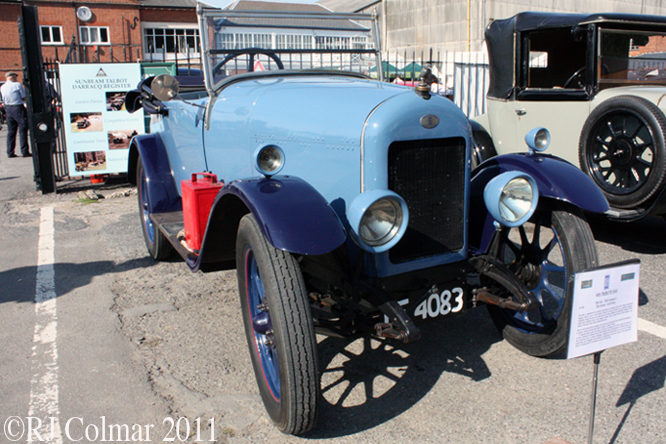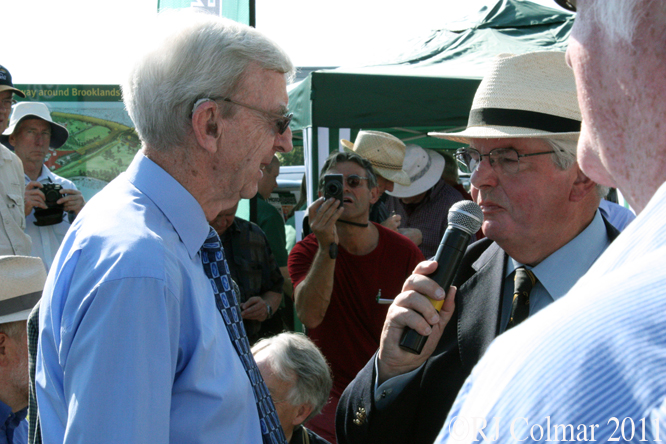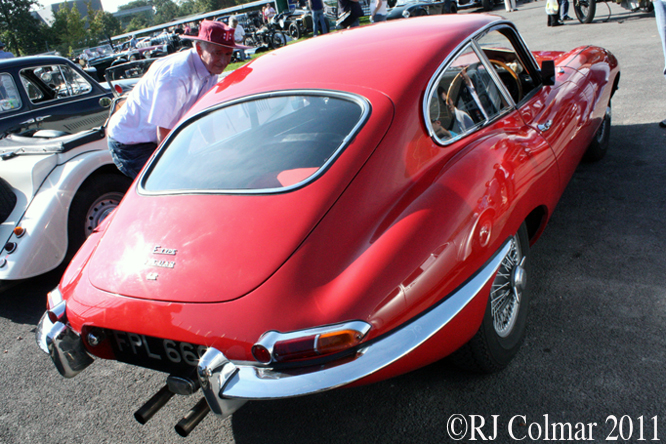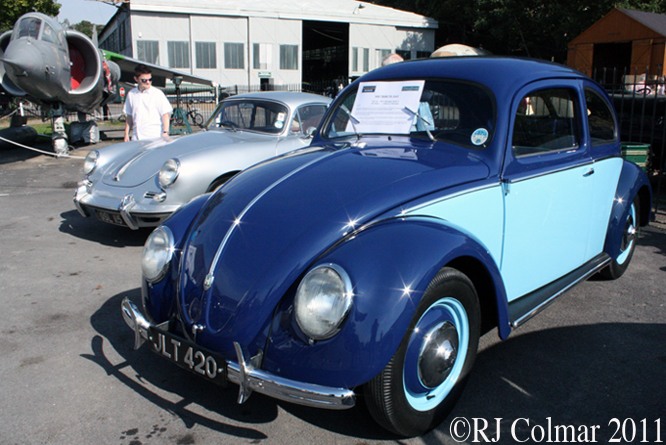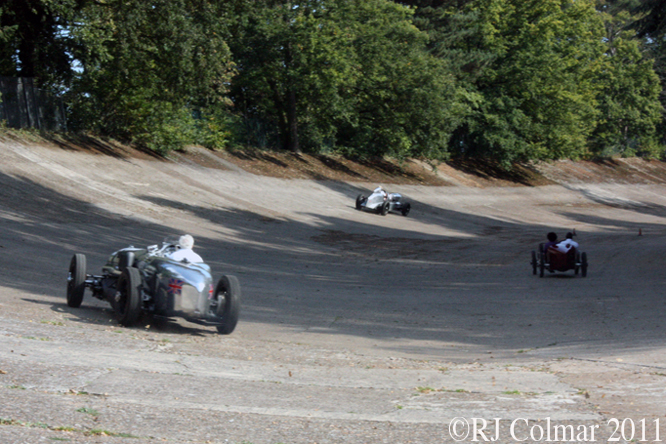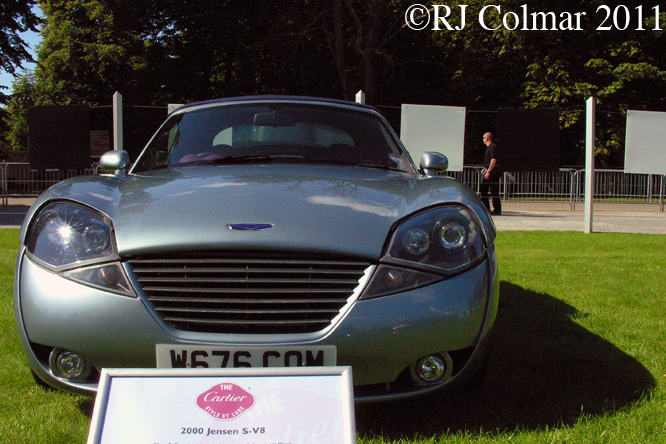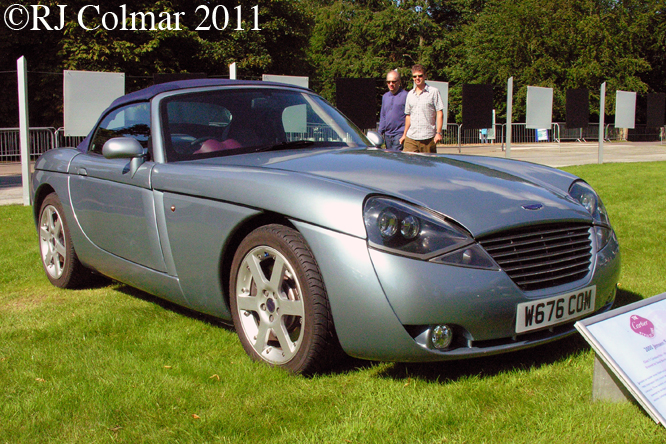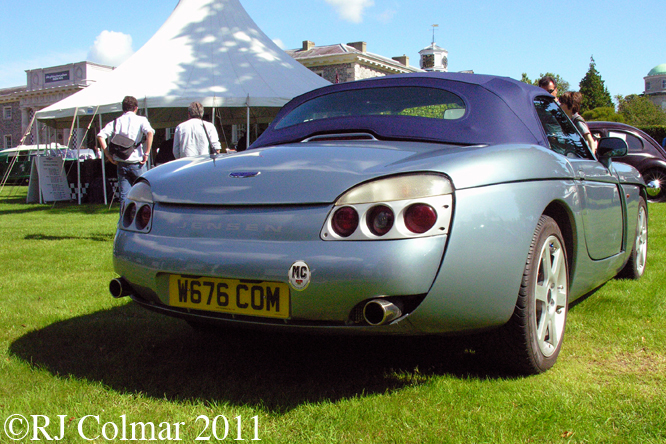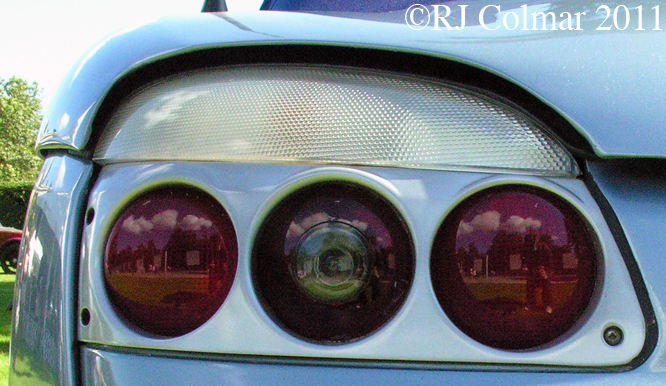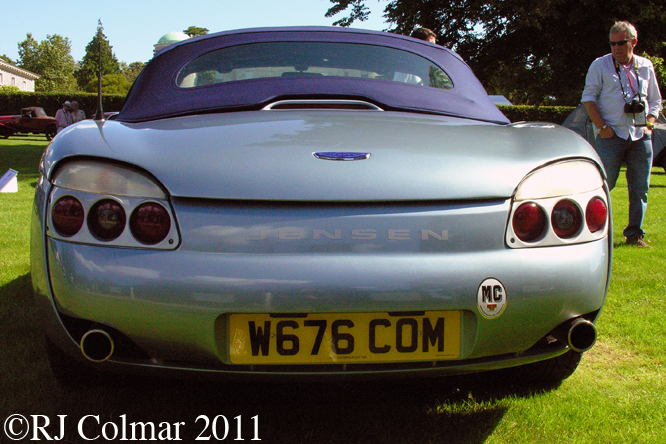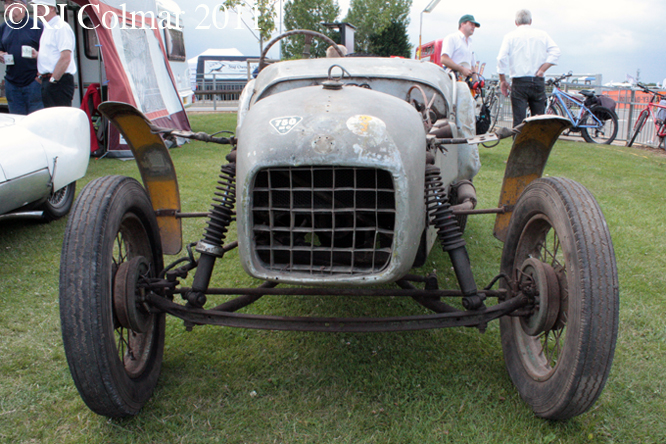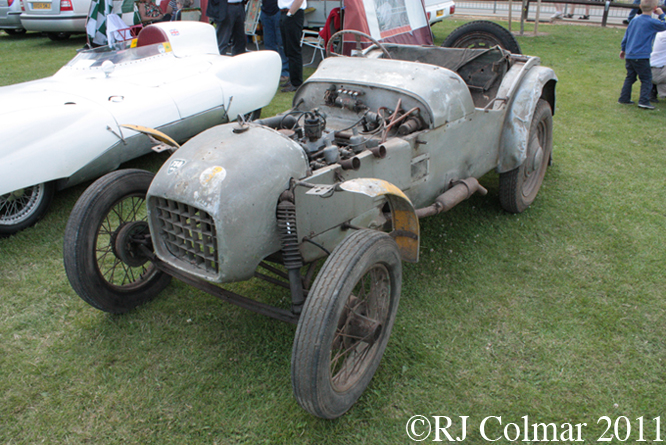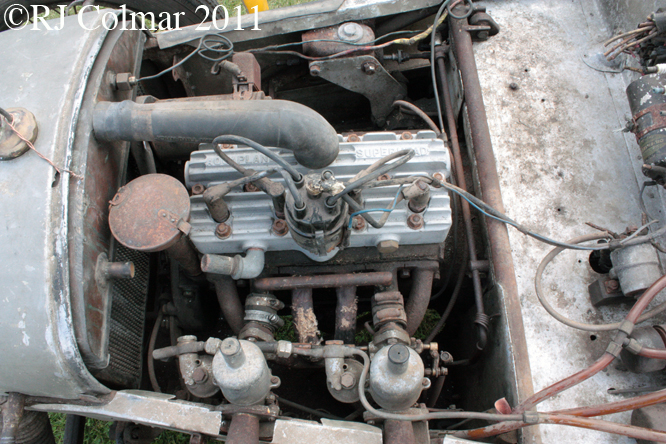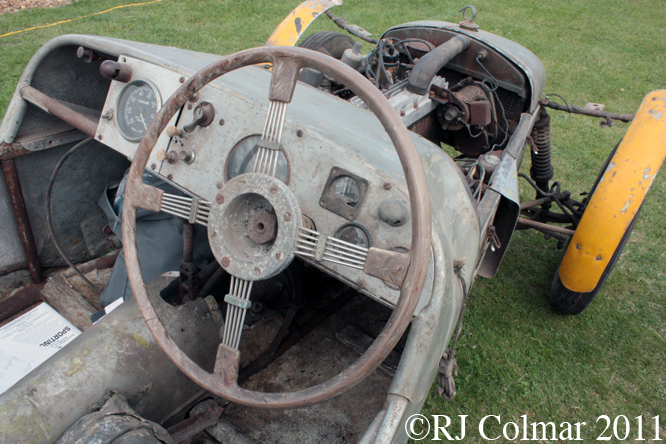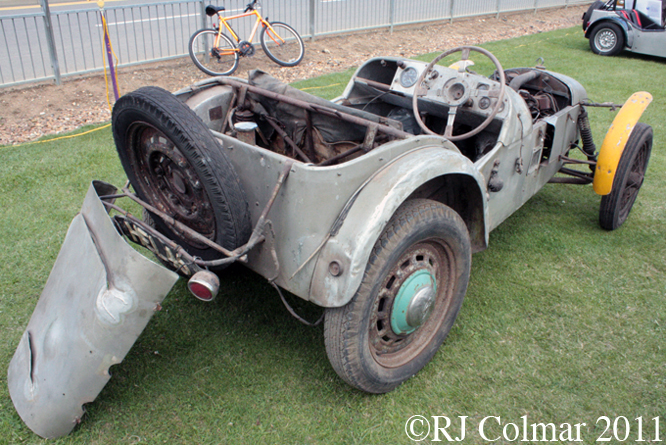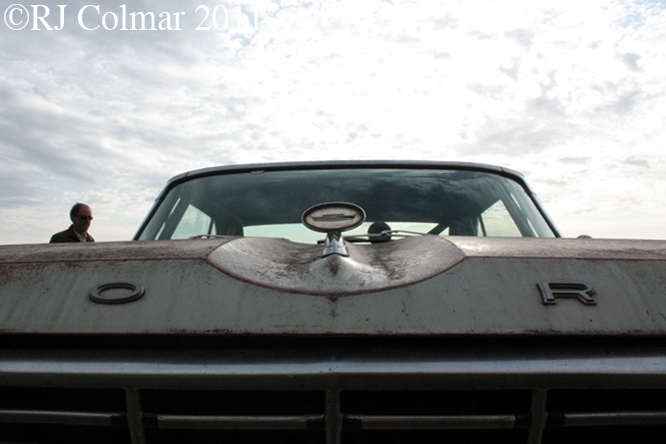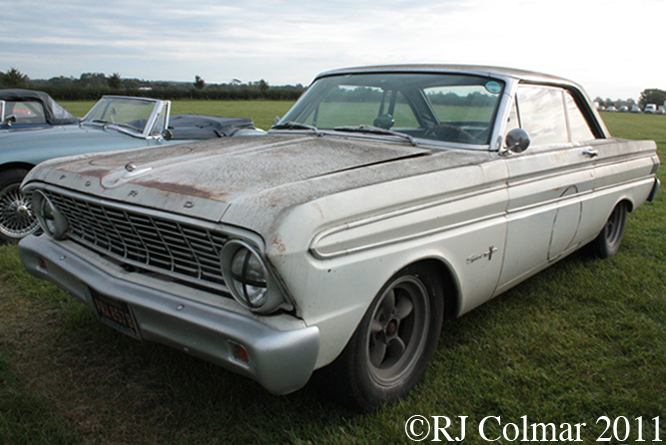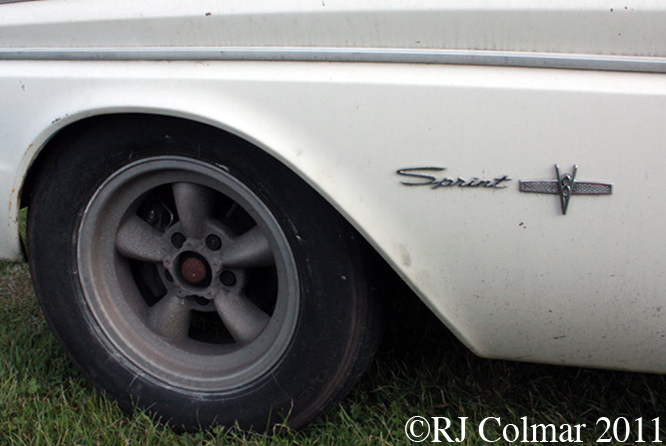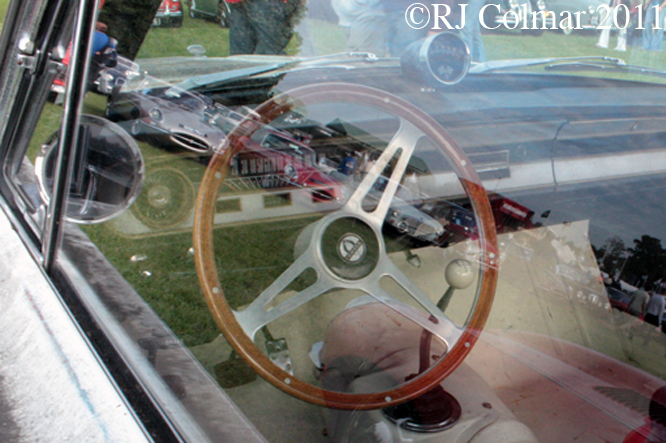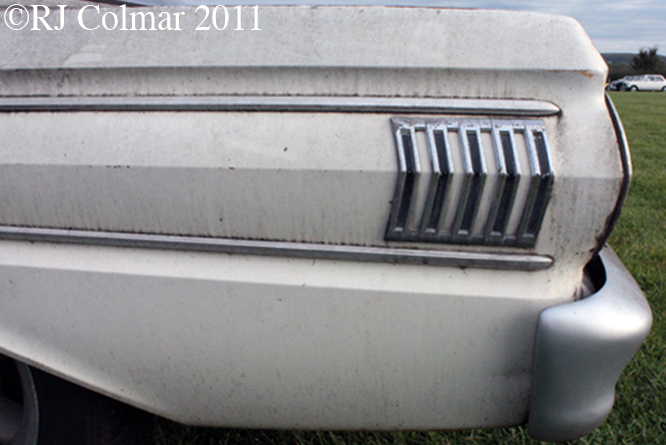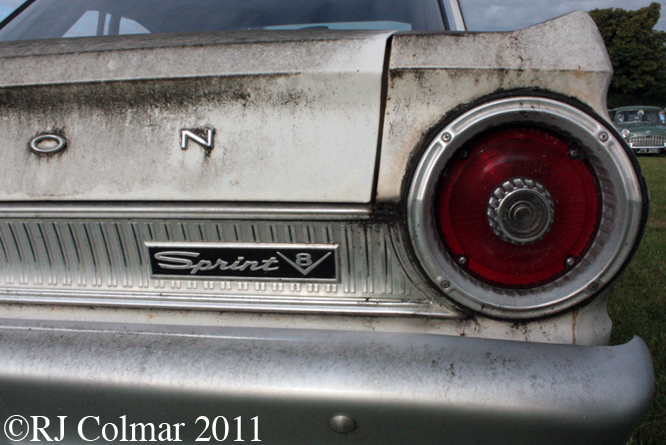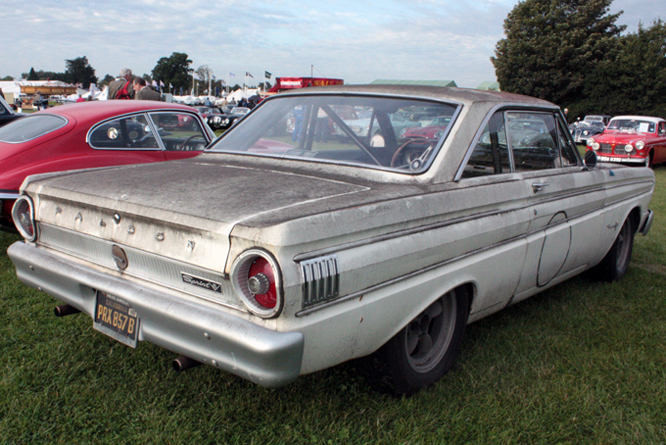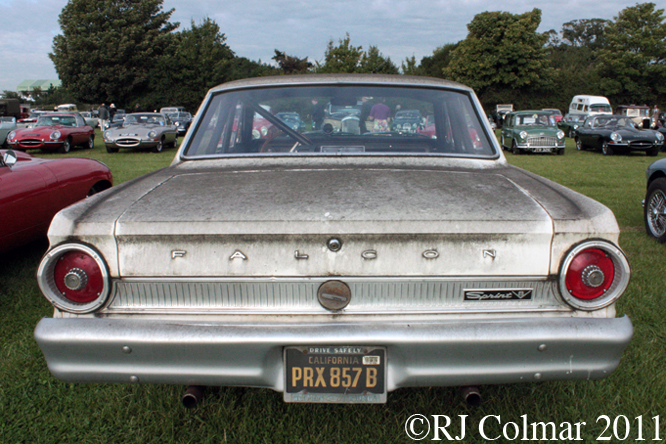The RAC TT or International Tourist Trophy is a more or less annual award given to the winners of a selected motor race. It was first awarded in 1905 making it the longest lasting trophy in Motorsport. Among the many venues that hosted the RAC TT is Goodwood which ran TT races from 1958 to 1964. Below are 9 of the 10 Ferrari’s that took part in the Revival Celebration TT practice sessions a couple of weeks ago.
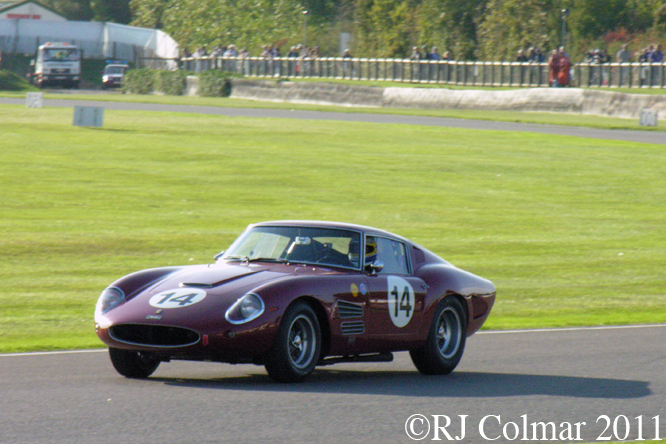
The #14 Ferrari 250 GT Drogo started life as a 250 GT SWB (Short Wheel Base) Competizione chassis #2445GT in 1961, it was supplied to Garages Francorchamps in Belgium and is known to have won at least seven European races in the hands of Robert Crevits in the 1961 and ’62 seasons. At Le Mans in 1962 Robert Darville crashed the car and it was subsequently sent to Piero Drogo in Modena where the current bodywork was fitted. Apparently James Coburn briefly owned this car in 1964. Dutchman David Hart shared the #14 with 2006 RAC TT winner Michael Bartels at Goodwood.
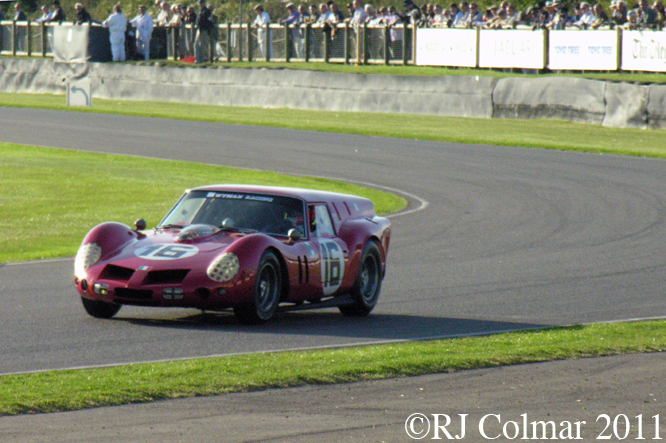
Readers from Rowdy.com may remember my blog on the Ferrari 250 GT SWB Breadvan, I’ll repost the whole blog here if I find myself getting short of Ferraris to write about, chassis #2819 is a bastard in so much as it also started life as a 1961 250 GT SWB, but Count di Misurata had his car upgraded by Giotto Bizzarrini, the man responsible for designing both the Ferrari 250 GT SWB and the later 250 GTO. The ‘Breadvan’ was driven at Goodwood by Nicholas Minassian and Max Werner.
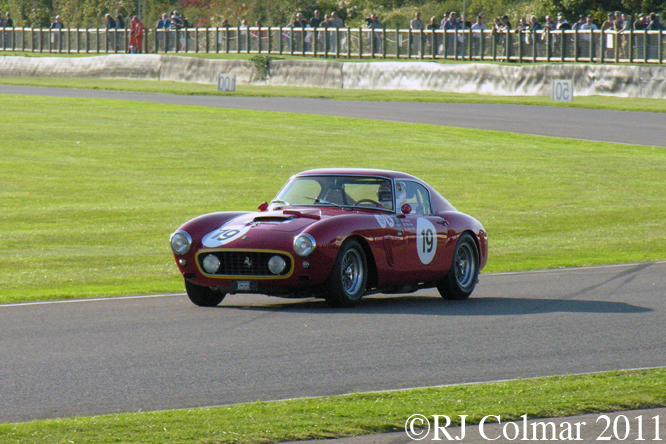
One of my all time heroes Art Merzario shared the #19 250 GT SWB/C with Kilian Koenig. This 1960 model chassis #1811GT was another car originally supplied to Garages Francorchamps and in the hands of Robert Crevits won 3 races outright in the 1961 season.
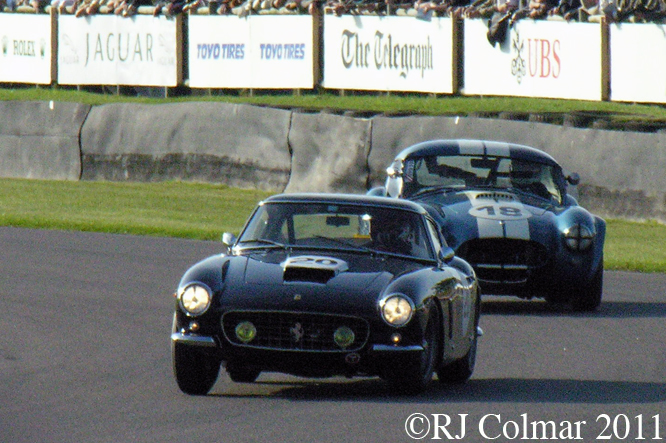
Conrad Ulrich shared his #20 250 GT SWB chassis #3107GT with Frank Stippler at Goodwood. This chassis was originally supplied to M. Auregli in Italy and has no race history, that I can discern, until the current owner acquired it in 1999.
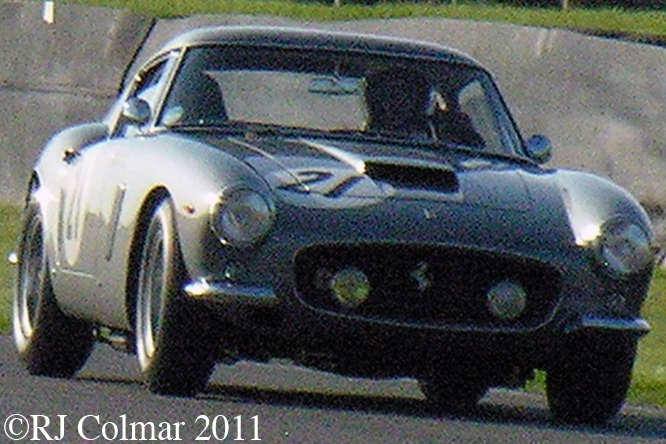
This light weight 1961 250GT SWB Compitizione was originally entered by the North American Racing Team in the Paris 1000 kms for the Mexican Rodriguez brothers who won on the cars debut race. Subsequently it was sold to Doug Thiem in the USA who succesfully campaigned this chassis #3005GT in 1962. The #21 car now belongs to Lukas Hueni who shared it with Carlo Voegele at Goodwood.
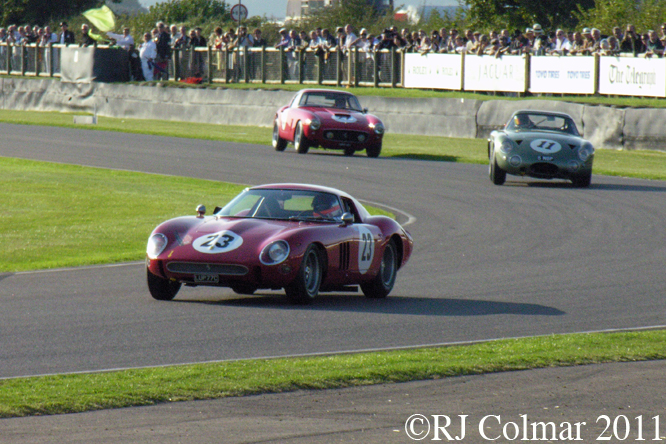
Gregory Whitten’s #23 250 GTO chassis #3413 was originally used as a spare car and tested by Graham Hill and engineer Mauro ‘Fury’ Fogheri on the Targa Florio in 1962, later that year #3413 was acquired by Edoardo Lualdi who scored numerous overall and class wins hillclimbing with it. In 1963 Gianni Bulgari raced it scoring a class win on the Targa and an overall win at Monza. In 1964 the car was fitted with ’64 GTO bodywork at the Ferrari factory for new owner Corrado Ferlaino who promptly took another class win on the Targa and at least two more hillclimb class wins. In 1967 Jack Le Fort acquired #3413 for £6000 /@ US$ 15,000 after several further changes of ownership Gregory Whitten acquired it in 2000 for US$ 7 million ! Greg shared his car with 6 time Le Mans winner Derek ‘Dinger’ Bell at Goodwood.
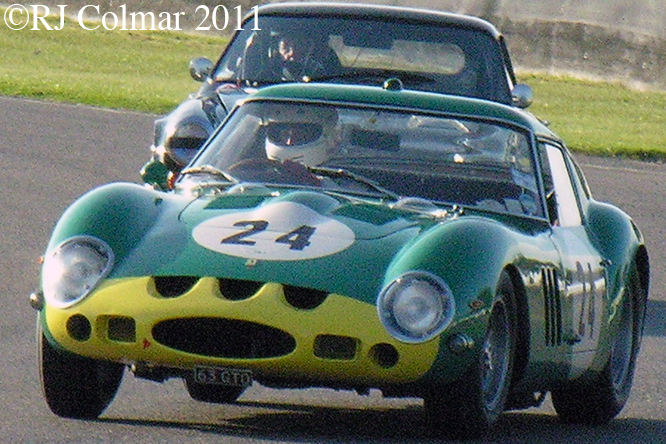
The #24 Ferrari 250 GTO chassis #3767GT was raced with the #8 by original owner David Piper to 5th place in the 1962 Tourist Trophy at Goodwood. David won races in Angola and South Africa with this car in 1962. In 1963 David shared the car at Sebring with the cars next owner Ed Cantrell who clocked up further class wins with the car through to the end of 1964. Since 1974 #3767 has been the property of heavy plant magnet Anthony Bamford at Goodwood his son Jo shared the drivng duties with Alain de Cadenet.
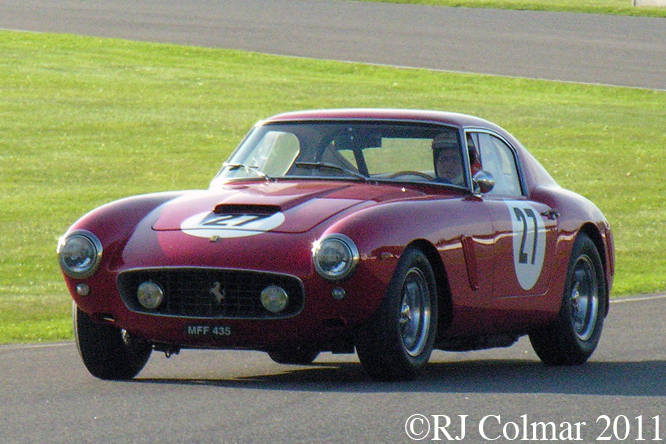
Jose Albuquerque, of Portugal brought his 250GT Compitizione to Goodwood and shared it with Barrie Williams. Chassis #2159GT was originally supplied to Garage Montchoisy, Geneva, CH and Gérard Spinedi won on his debut in the 1000m sprint at Cern, Spinedi scored numerous overall and class victories in races, rallies and on the hills up to 1964. Mr Albuquerque has been the custodian of this car since 2001.
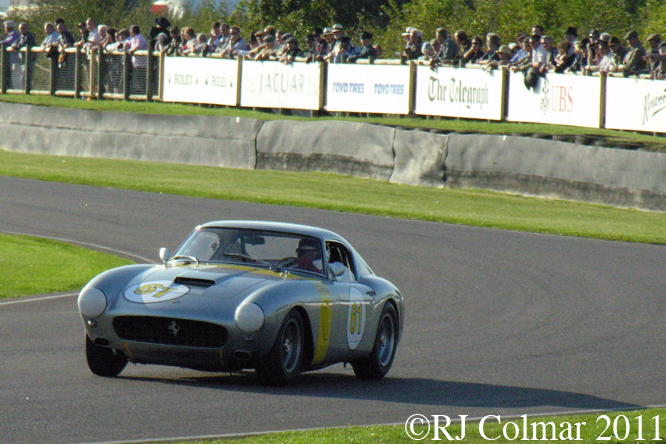
Finally Garage Francochamps appears to have acquired this 1960 steel bodied 250GT SWB Berlinetta chassis #2069GT from Baron de Fierlant in 1962, apart from a 2nd place in the 1962 Ardenne hillclimb with Robert Crevits at the wheel, the car has no discernable competition history until the turn of this century when Vincent Gáye acquired it. Vincent was sharing #2060GT with former national hillclimb champion David Franklin in the RAC TT celebration.
My thanks to PauloSF at Ferrari Chat for his contribution to todays blog.
Thanks for joining me on this RAC TT edition of ‘Gettin a lil’ psycho on tyres’, I hope you will join me again tomorrow. Don’t forget to come back now !
SOT Thanks to a strong alignment of favourable planets I’ll be attending the Bill Boddy Tribute Day at Bill’s spiritual home Brooklands tomorrow, if I had not picked up a copy of Motor Sport, edited by Bill Boddy, in January 1973 I’d never have been bitten by the passion I still have 38 years later for all things motoring.

